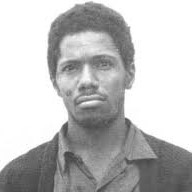
d: 1977
Erskine Durrant Burrows
Summary
Name:
Erskine Durrant BurrowsNickname:
BuckYears Active:
1972 - 1973Status:
ExecutedClass:
MurdererVictims:
4Method:
ShootingDeath:
December 02, 1977Nationality:
Bermuda
d: 1977
Erskine Durrant Burrows
Summary: Murderer
Name:
Erskine Durrant BurrowsNickname:
BuckStatus:
ExecutedVictims:
4Method:
ShootingNationality:
BermudaDeath:
December 02, 1977Years Active:
1972 - 1973bio
Erskine Durrant “Buck” Burrows was a Bermudian man, active in the 1970s and closely associated with radical anti-colonial movements that arose in opposition to British rule. While details about his early life are sparse, Burrows became involved with the Black Beret Cadre, a militant group influenced by Black Power ideology and revolutionary Marxism.
This group operated during a period of racial tension, economic inequality, and political unrest in Bermuda. The island’s Black majority, long marginalized in employment, housing, and governance, saw little justice in a colonial administration still ruled by White elites and backed by British military might. Burrows rose within the ranks of the Cadre and eventually proclaimed himself the “Commander-in-Chief of all anti-colonialist forces in Bermuda.”
murder story
The first of Burrows’ confirmed killings occurred on September 9, 1972, when Police Commissioner George Duckett was ambushed and murdered. This act shocked the island and raised fears of politically motivated violence.
Then, on March 10, 1973, a high-profile double assassination rocked Bermuda. Sir Richard Sharples, the newly appointed British Governor, and his aide-de-camp, Captain Hugh Sayers, were shot outside Government House during an evening walk with Sharples’ Great Dane, Horsa. All three, Sharples, Sayers, and the dog, were killed. The killers vanished into the night.
Less than a month later, on April 6, 1973, Victor Rego, a supermarket co-owner, and his employee Mark Doe, were gunned down during an armed robbery. Burrows was soon linked to this incident as well.
In 1976, Burrows was finally arrested after committing a $28,000 bank robbery. During interrogation, he confessed to multiple murders, including that of Governor Sharples. In a chilling and defiant written statement, he justified the killings as anti-colonial resistance and criticized Black Bermudians who mourned Sharples’ death. He claimed the murders were meant to expose the injustices and internalized colonialism still present in island society.
Burrows wrote:
“The motive for killing the Governor was to make the Black people become aware of the evilness and wickedness in this island... and to show that these colonialists were just ordinary people like ourselves.”
Larry Tacklyn, a fellow member of the Cadre, was also arrested and convicted—though not for the governor’s assassination, but for his role in the Rego and Doe murders. Tacklyn maintained hope for a last-minute reprieve. Burrows did not.
The death penalty had not been carried out in Bermuda since World War II, and a moratorium on executions was in place. However, amid immense political pressure and public unrest, British authorities approved the hangings. Since no local hangman had experience, an executioner was flown in from Canada, where the last hangings had occurred in 1962.
On the morning of December 2, 1977, Erskine Burrows and Larry Tacklyn were executed by hanging at Casemates Prison. They were the last people executed under British rule anywhere in the world.
The executions ignited three days of riots across Bermuda, costing over $2 million in damages. The unrest prompted the British military to deploy soldiers from the Royal Regiment of Fusiliers as reinforcements. The Bermuda Regiment, deemed too small to manage civil unrest alone, was later expanded from 400 to 750 troops.
In the years that followed, questions lingered about the full scope of the conspiracy. A 2013 investigation argued that a third man involved in Sharples’ murder was never charged. This unnamed militant, also linked to the Black Beret Cadre, was allegedly more extreme and aimed to overthrow the government entirely.